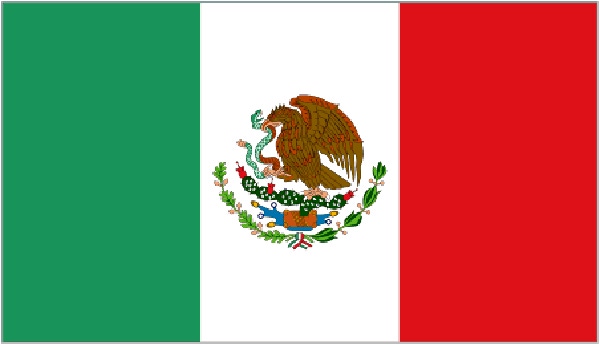Mexican Pork Market Poised for Rebound
March 19, 2012

While diversification of export markets for U.S. pork is critical to ensuring continuous export growth, there are a handful of markets that can have a dramatic effect on the industry all by themselves. Mexico is one of these. The signs are positive that the United States’ No. 1 trading partner, by volume, will turn in a strong performance in 2012.
How important is Mexico to the U.S. pork industry? In 2011, Mexico purchased nearly one-quarter (23.8%) of all U.S. pork exports by volume, primarily hams and picnics, which weighed in at 537,535 metric tons (nearly 1.2 billion pounds) valued at just over $1 billion. For muscle cuts only, 2011 exports to Mexico accounted for 5% of all U.S. pork production. The January export pace appears to have picked up, rising 21% in volume and 27% in value over year-ago records.
In addition to these positive signs, there are a number of economic and other indicators that help paint an optimistic picture for the year ahead.
Drought Impact
Mexico’s pork industry has been impacted by the drought, perhaps not to the same extent as its beef industry. High prices in Mexico reflect limited supplies of domestic pork. Mexico’s hog carcass prices averaged $1.35/lb. in February, up 16% compared to last year and at a significant premium over U.S. prices.
In Mexican pesos, the year-over-year increase was even more significant at 23%, with prices averaging 38 pesos/kilogram (kg) in February. In the first quarter of 2012, the peso was weaker than last year and in mid-March it was valued at 12.7 pesos/dollar, about 8% lower than the same period last year. However, the peso is stronger than it was from September 2011 through January 2012, which will help Mexico’s purchasing power for U.S. pork.
As beef, both domestic and imported becomes increasingly expensive Mexican consumers may turn to more affordable proteins including pork. This trend was evident in U.S. pork export data, with record-breaking exports to Mexico in December 2011 (60,314 metric tons or 133 million pounds), then breaking that record in January 2012 (60,737 metric tons or 133.9 million pounds).
Let the Trucks Roll
Another positive factor for U.S. pork was the elimination last year of duties imposed by Mexico related to the U.S./Mexico North American Free Trade Agreement (NAFTA) trucking dispute. Now that those duties, which ranged from 2.5% to 5% last year, have been eliminated, the pricing advantage that Canadian pork enjoyed has been eliminated. For all of 2011, Canada’s pork exports to Mexico were down 30% to 41,796 metric tons (92.1 million pounds), and January’s totals were up only 3.6% to 3,709 metric tons (8.2 million pounds).
Trucks that carry affordable U.S. pork south of the border also carry corn for livestock, but the roughly $1/bu. in transportation costs gives the U.S. pork industry a further price advantage over the domestic product fed with U.S. corn.
Growing Mexican Exports
While domestic pork supplies are tight and more expensive for Mexican consumers, the country is very focused on increasing its pork exports. They increased 10% to 66,770 metric tons (147.2 million pounds) in 2011. Japan is the top market at 47,234 metric tons (up 3%), but led by 49% growth to South Korea (10,510 metric tons) and 22% growth to the United States (8,788 metric tons). Mexico benefits from a free trade agreement with Japan and is able to specialize in value-added cuts such as jowl fillets, which require extra labor.
Export Wild Cards
Several wild cards will affect the U.S. pork export market in the coming year. One is the competition of more affordable poultry. U.S. poultry exports to Mexico rose 6% in January to 55,024 metric tons (121.3 million pounds). Mexico was the top destination for U.S. poultry in 2011, purchasing 637,782 metric tons (1.4 billion pounds). However, we are still waiting to hear the outcome of Mexico’s antidumping investigation against U.S. poultry, a decision that is expected this summer.
The exchange rate between the peso and dollar is another wild card. The presidential election in early July in Mexico could have an effect. However, the latest forecasts are for Mexico’s gross domestic product (GDP) to grow 3.3% this year, with the most recent quarter (Q4 2011) growth estimated at 3.7%. While Mexico’s growth is expected to continue to exceed the United States’, estimated at 2.1% for 2012, the Mexican economy remains heavily tied to the U.S dollar.
Throughout this process, the U.S. Meat Export Federation will continue the Pork Demand Development campaign implemented last summer designed to boost overall pork consumption by Mexicans. Per capita pork consumption in Mexico is relatively low at 30.8 lb./year, which compares to 50.6 lb. in Canada, 66 lb. in the United States, and 77 lb. in China. And since U.S. pork accounts for about 91% of all imported pork in Mexico, we share disproportionately in any sales growth.
You May Also Like


